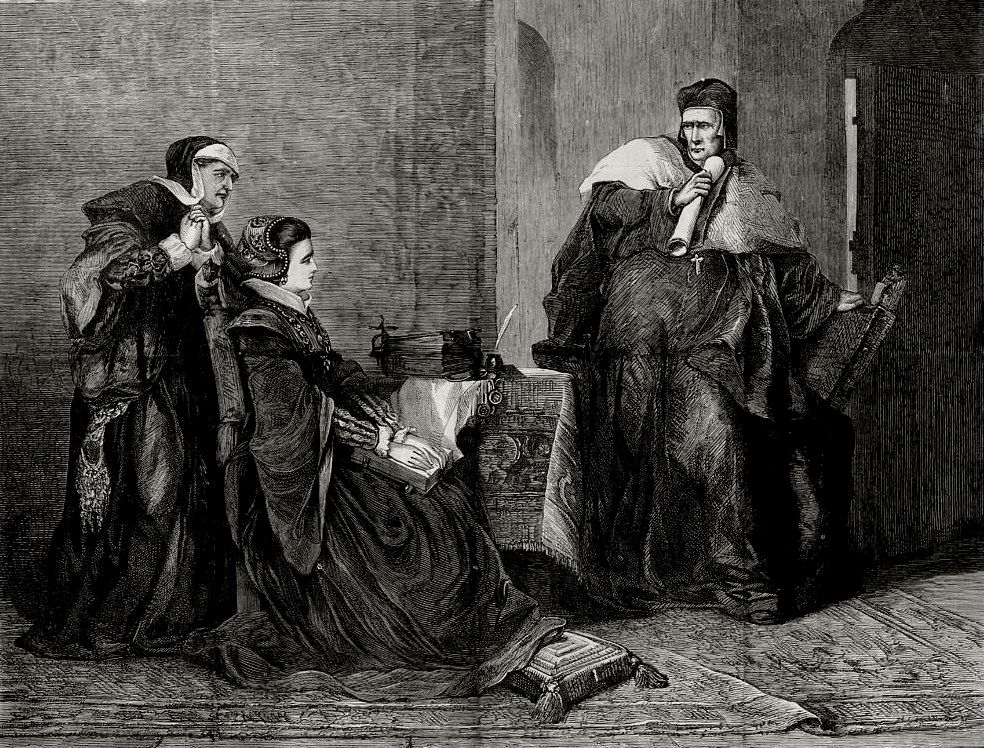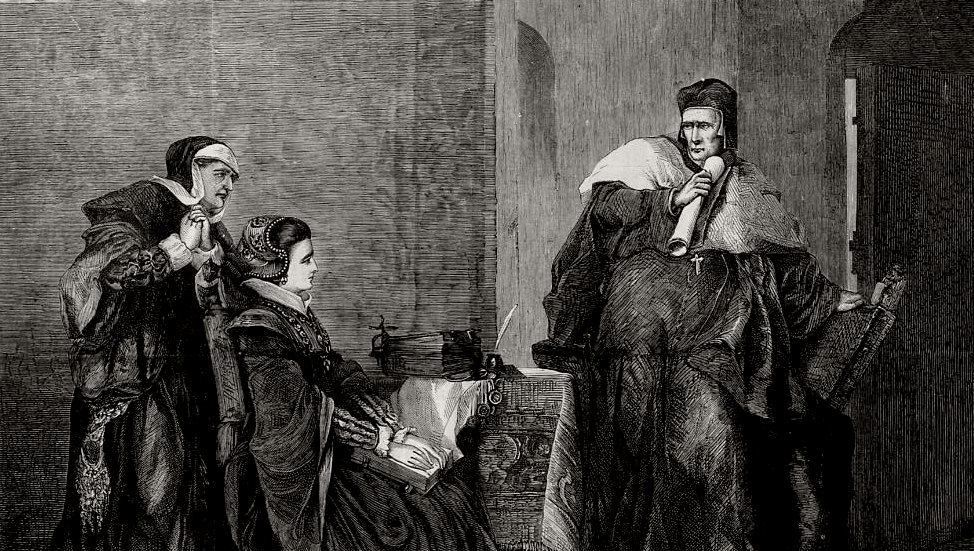
Jane’s reign spanned nine days in July 1553. When Mary acceded, a trial was quickly held for Jane’s father-in-law, the mastermind behind the attempted coup. John Dudley, Duke of Northumberland, was tried and convicted in Westminster Hall on August 18, 1553, then executed four days later on Tower Hill.
Once this retribution had occurred, the other players were largely pardoned – including Henry Grey, Jane’s father. Not all of them could be – the direct actors, like Jane Grey and her husband Guildford Dudley, continued in the Tower until after Mary’s coronation. These pawns were finally brought to trial, along with Archbishop Thomas Cranmer and two other Dudley boys (Ambrose and Henry – but not Robert). Instead of Westminster, which was only for “noblemen,” they were tried at Guildhall.
As we know from Machyns Diary, “The lady Jane was in a blacke gowne, tourned downe; the cappe lined with fese velvet, and edget about with the same, in a French hoode, all black, with a black habilment, a black velvet boke hanging before hir, and another boke in hir open hand.”
We get more from The Tower From Within, by Major-General Sir George Younghusband: “[T]he indictment ran ‘for assumption of the Royal authority by Lady Jane, for levying war against the Queen and conspiring to set up another in her room.’ The prisoners all pleaded guilty, and were duly sentenced; that passed on Lady Jane Grey was that ‘she should be burned alive on Tower Hill or beheaded as the Queen pleases.’ After sentence the prisoners returned on foot to the Tower, through the crowded streets of the city, guarded as before. An unnecessary humiliation, especially for a lady of rank, and cousin of the Queen. Lady Jane’s imprisonment at the Tower was not, however, made more irksome than necessary, for she was given ‘the libertie of the Tower, so that she might walk in the Quene’s garden and on the hill’.”
Except for making Jane walk on foot back to the Tower, Mary really showed remarkable courtesy to her young cousin. Between the intentional delay and the relative freedom, it really seemed that Mary would eventually rescind the sentence against them…and then Henry Grey did something really stupid: he joined the rebellion headed by Sir Thomas Wyatt (the younger) to protest Mary’s proposed marriage to Philip of Spain. Interestingly, the rebels were said to want to replace Mary with Elizabeth, not Jane Grey – but Henry Grey’s active participation suggested that Jane was the danger. She and Guilford were executed on February 12, 1554; Henry Grey followed them eleven days later.
Before Jane’s execution, Mary tried (unsuccessfully) to convert her. Hence the photo I chose to accompany this post: her victory over Stephen Gardiner. It’s getting a bit ahead of the story as it existed on the anniversary of this day, but I couldn’t resist.
***
If you like my posts, you’ll love my books! Jane the Quene and The Path to Somerset have finally been joined by The Boy King – now available through Amazon, Barnes & Noble, Kobo, and Apple!

(What? You haven’t read Jane the Quene or Path to Somerset yet? Please do! And equally important – please leave a review – even just a star rating! It makes a huge difference in helping new readers find them and would mean the world to me!)

Very interesting!
So many beheadings!
It seems like Mary’s attempt to “convert” Jane was a last ditch attempt on Mary’s part to mitigate her own guilt in all the proceedings. (If Mary couldn’t save Jane’s head, she could at least save Jane’s soul.) Or would Mary have commuted the death sentence if Jane converted?
I appreciate all the research you have done to make the people seem “alive” — the clothing, the specifc access in the Tower, the intricaties of relationships.